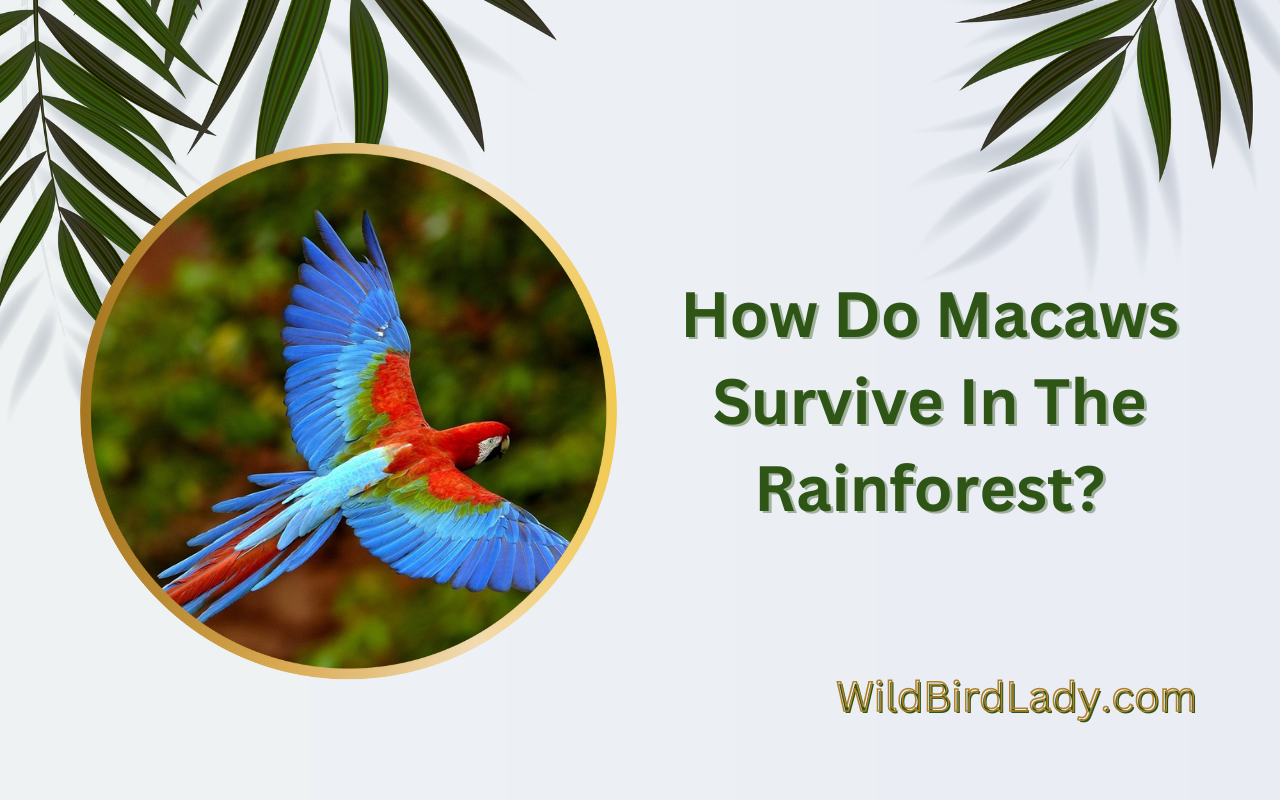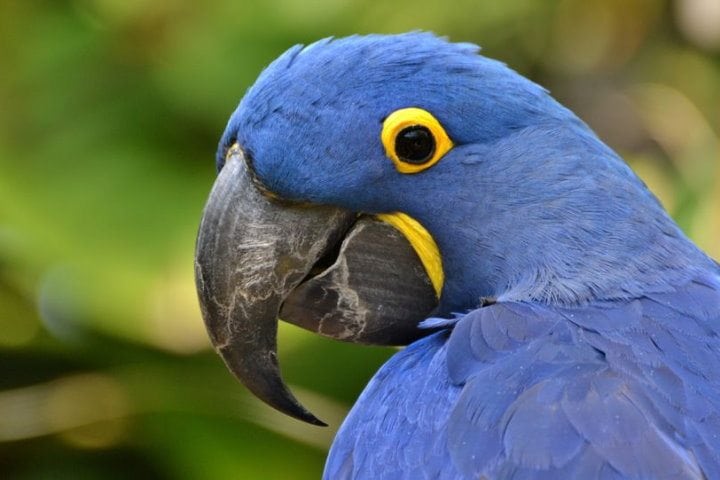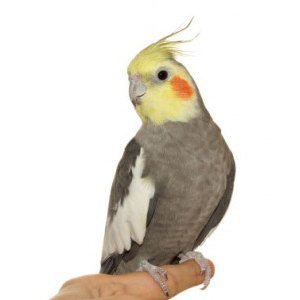How Do Macaws Survive In The Rainforest?
Macaws survive in the rainforest by their strong beaks and specialized feet that allow them to climb and perch in trees. The vibrant and colorful macaws are essential components of the dense rainforest ecosystem.
They are one of the largest parrot species, and their size plays a crucial role in their survival. Macaws are adapted to living in the rainforest by their strong beaks, which enable them to crack open the hard shells of nuts and seeds, and their specialized feet, which allow them to climb and perch on branches.
Moreover, macaws have keen eyesight to scan the forest for predators and prey, and their intelligence allows them to recognize the calls of their kin and other birds, supporting their communication and socialization. Macaws mainly eat fruits, nuts, and seeds, and they are known to forage over vast distances in search of food. Though macaws have adapted to living in the rainforest, they still face many threats from habitat loss, hunting, and the illegal pet trade.
Adaptations For Climbing
How Do Macaws Survive In The Rainforest?
Macaws are known for their colorful feathers and their stunning ability to fly, but their survival in the rainforest is not just dependent on their wings. These birds have a wide range of adaptations that make them perfect for life in the rainforest.
Among these adaptations, their climbing abilities are crucial. Here’s a closer look at how strong legs and feet have helped macaws thrive in the rainforest.
Description Of Physical Adaptations For Climbing
Macaws have evolved numerous physical adaptations that allow them to climb through the forest canopy with ease. These adaptations include:
- Strong legs and feet: Macaws have powerful leg muscles, which allow them to grip onto branches and climb trees with speed and ease. Furthermore, their feet are equipped with sharp, curved claws that provide excellent traction with tree bark.
- Flexible ankles: Macaws have oversized toes that are capable of bending backward at the ankle joint. This flexibility enables them to grasp onto branches from different angles, giving them the freedom to move through the rainforest with agility.
Explanation Of How These Adaptations Allow Macaws To Access Food Sources And Avoid Predators
Macaws primarily climb in search of food and to avoid predators. Their physical adaptations enable them to:
- Access food sources: Macaws use their strong legs and feet to climb up and down tree trunks, branches and vines in search of food, which mostly consists of fruits, nuts, and seeds.
- Escape predators: The rainforest is full of predators, including snakes and other birds of prey, such as eagles. Macaws can detect such predators by keeping a watchful eye on the canopy. If a predator is spotted, they use their strong legs and feet to climb upwards, leaving the potential prey far below. This ability allows them to escape danger and find safety quickly.
Examples Of Macaws Using These Adaptations In The Wild
Macaws are highly skilled climbers, and their abilities are often fascinating to witness in the wild. Here are some examples:
- Ability to climb upside-down: Macaws can hang precariously upside-down thanks to their sharp and flexible claws. This behavior allows them to reach fruits that other birds cannot, giving them a competitive advantage in accessing food.
- Hopping: When macaws hop from branch to branch in the canopy, they use their strong legs and feet to grip tightly onto branches while using their wings to balance. This adaptation makes it easier for them to navigate through the rainforest without losing balance and falling off the tree.
Macaws are one of the many wonders of the rainforest, and their ability to climb through the canopy – largely thanks to their strong legs and feet – allows them to access food and avoid predators efficiently. This adaptation is a fundamental reason why these birds are so successful in their natural habitat.
Feeding Habits
How Do Macaws Survive In The Rainforest – Feeding Habits
Getting food in the rainforest can be a challenge for any animal. However, macaws have developed several unique feeding habits that allow them to thrive in this lush, biodiverse environment. Let’s explore some of their dietary habits and feeding behaviors below.
Discussion Of Macaws’ Diets And Feeding Behaviors
- The primary diet of macaws consists of fruits, nuts, seeds, and insects
- They also feed on clay and soil in specific locations thought to aid digestion and detoxification
- Macaws have a strong beak that is capable of cracking hard seeds and nuts that many other birds cannot eat
- They consume food in a wide variety of locations, such as on the ground, in trees, and even in the canopy
Description Of Specialized Beak Adaptations For Cracking Seeds And Nuts
- Macaws have a powerful, curved beak that enables them to crush the hardest of seeds and nuts
- The fleshy tongue of a macaw is also useful for removing the kernel from within the shell
- Their beak is also perfect for breaking open fruit and extracting the juicy flesh inside
Explanation Of How Macaws Locate Food Sources In The Rainforest
- Macaws locate food sources by using their keen sense of sight and hearing, as well as their acute sense of smell
- They observe the behavior of other animals in the forest, particularly those that feed on fruits, nuts, or insects
- They also feed on fruits and nuts of specific trees that produce a lot of food, which they then remember for future reference
- Macaws move throughout the forest to find food, and they keep moving in search of new sources
Macaws are efficient hunters and scavengers, owing to their exceptional senses and excellent beak adaptations. Their diverse and flexible feeding habits allow them to survive in a challenging environment and compete with other animals for food. By adapting to the rainforest’s environment and creating specialized solutions, macaws have ensured their continued existence in the biodiverse ecosystem of the amazon.
Predators And Defense Mechanisms
Macaws are one of the most brilliant and colorful birds that inhabit the tropical rainforests of south and central america. Being a beautiful bird, unfortunately, it makes them a tempting target to many predators in the rainforest. Therefore, macaws have developed several defense mechanisms for their survival.
In this blog post, we will take a closer look at macaws and their ability to survive in the rainforest by exploring the predators they face and the defense mechanisms that they have adapted over time to counteract these threats.
Overview Of Predators That Macaws Face In The Rainforest
Macaws face numerous predators in the rainforest, including:
- Jaguars
- Harpy eagles
- Boa constrictors
- Snakes
- Monkeys
- Humans
Macaws are visible and easily accessible targets for predators, which puts them at constant risk. Their brilliant feathers and loud vocalizations can make them an easy prey for many predators in the rainforest.
Description Of Defense Mechanisms Such As Vocalizations And Flock Behavior
Macaws have a few defense mechanisms, which they use to protect themselves from predators. Here are some of them:
- Loud vocalizations: Macaws communicate with a range of loud calls, which serve a dual purpose. One, it signals a warning call to other macaws in the area that there is a predator in the vicinity. The other purpose is to alert predators that they have been spotted and are being watched.
- Flock behavior: Macaws are social birds and often live in large flocks, which is their first line of defense against predators. When they sense a threat, they gather in large numbers to intimidate the predator by making loud noises.
- Flight and agility: Macaws are agile fliers and can fly at high speeds to avoid predators. They are also excellent at maneuvering through the rainforest canopy, using their strong beaks and claws to hold on to the branches.
- Feigning injury: Macaws can fake injury when faced with a predator. They will flap their wings, make loud noises, and appear vulnerable to convince the predator that they are an easy meal.
Explanation Of How These Defense Mechanisms Allow Macaws To Survive In The Face Of Predators
Macaws have adapted several defense mechanisms over time that enable them to survive in the harsh rainforest environment. Vocalizations, flock behavior, and agility make them a hard target for most predators in the rainforest. By communicating with loud calls, they alert other macaws and intimidate predators, while flock behavior allows them to gather in large numbers, making them a hard target.
Flight and agility enable them to escape from most predators and maneuver through the rainforest canopy. Feigning injury is one of their most effective defense mechanisms, which makes predators believe that they are an easy target. By utilizing a combination of these defense mechanisms, macaws can survive in the rainforest, despite facing a constant threat from predators.
Reproduction And Social Behavior
Macaws, with their vibrant colors and intelligent nature, have long captivated the attention of humans. These beautiful birds are mainly found in the rainforests of central and south america, where they have adapted to survive in their natural habitat. Reproduction and social behavior are two crucial aspects of macaw life that are worth exploring further.
So, let’s delve deeper and discover how macaws breed, raise their young, and interact with one another in the wild.
Discussion Of Macaw Breeding Habits And Mating Behaviors
Macaws typically breed during the rainy season when food is abundant. They form strong bonds with their partners and stay loyal for life. Some of their common mating behaviors include:
- Nesting: Macaws use their powerful beaks to create holes in trees where they can lay their eggs.
- Courtship: In courtship, the male macaw tries to impress the female by showing off his feathers and making various vocalizations.
- Monogamy: Macaws prefer to mate for life and stay with their partner. Polygamous behavior may occur in rare cases.
Explanation Of How Macaws Raise Their Young In The Rainforest
Macaws are highly attentive parents who take good care of their young. Some of the ways in which they raise their chicks include:
- Incubation: Both parents take turns incubating the eggs until they hatch.
- Feeding: Macaw chicks are fed a diet of regurgitated food by both parents until they are old enough to forage themselves.
- Fledging: When the chicks are ready, they leave the nest and start to fly and forage themselves. However, they tend to stay with their parents for a few years before leaving to form their own families.
Description Of Social Behavior In Macaw Flocks, Such As Communication And Hierarchy
Macaws are highly social birds that often form flocks of up to 30 birds. Some of their social behaviors include:
- Communication: Macaws make a variety of vocalizations, including screeches, squawks, and whistles, to communicate with one another. They also use body language, such as flapping their wings or raising their feathers, to convey their emotions.
- Hierarchy: Macaws establish a clear hierarchy within their flocks, with dominant individuals taking the lead in various activities like foraging and nesting. They also work together to defend their territories and protect their young.
Macaws have intriguing breeding, parenting, and social behaviors that help them survive in the challenging environment of the rainforest. It’s fascinating to learn more about these birds’ lives and how they have adapted to their habitat.
Frequently Asked Questions Of How Do Macaws Survive In The Rainforest?
How Do Macaws Survive In The Rainforest?
Macaws have evolved several adaptations to survive in the rainforest, such as bright colored feathers for mating and communication, strong beaks for feeding, and zygodactyl feet for grasping branches and climbing trees.
What Do Macaws Eat In The Rainforest?
Macaws feed on fruits, nuts, and seeds that are abundant in the rainforest canopy. Some species also consume clay from mineral-rich riverbanks, which helps them detoxify harmful substances from their diet.
Do Macaws Build Nests In The Rainforest?
Yes, macaws build nests in cavities of old trees or cliff faces, and they often return to the same place to breed every year. They lay 2-4 eggs per clutch that hatch after about a month, and the parents take turns incubating them.
How Do Macaws Communicate In The Rainforest?
Macaws use a combination of vocalizations and body language to communicate with each other. They have loud, distinct calls that can be heard from far and wide, and they also use their body feathers to express emotions like aggression or submission.
Why Are Macaws Important To The Rainforest Ecosystem?
Macaws play a vital role in the rainforest ecosystem by dispersing the seeds of the fruits and nuts they consume and thus supporting the growth of new trees and plants. They also help to pollinate flowers and provide food for predators like snakes and eagles.
Conclusion
Macaws are one of the most beautiful and intelligent creatures that exist in nature. Surviving in the rainforest can be an arduous task, but these birds have adapted and evolved in ways that have allowed them to thrive in such an environment.
From their incredible beaks to their bright and colorful feathers, each part of their anatomy offers a unique advantage that affords them the ability to survive and thrive. Their diet, social structure, and nesting habits all have a role to play in their success.
Researchers are constantly uncovering new information about these intelligent creatures, and with continued conservation efforts, we can help ensure that their habitats and populations remain intact for generations to come. It’s fascinating to learn about the various ways macaws have adapted to the rainforest, and it is heartening to know that we can take steps to protect them and their beautiful habitat.







